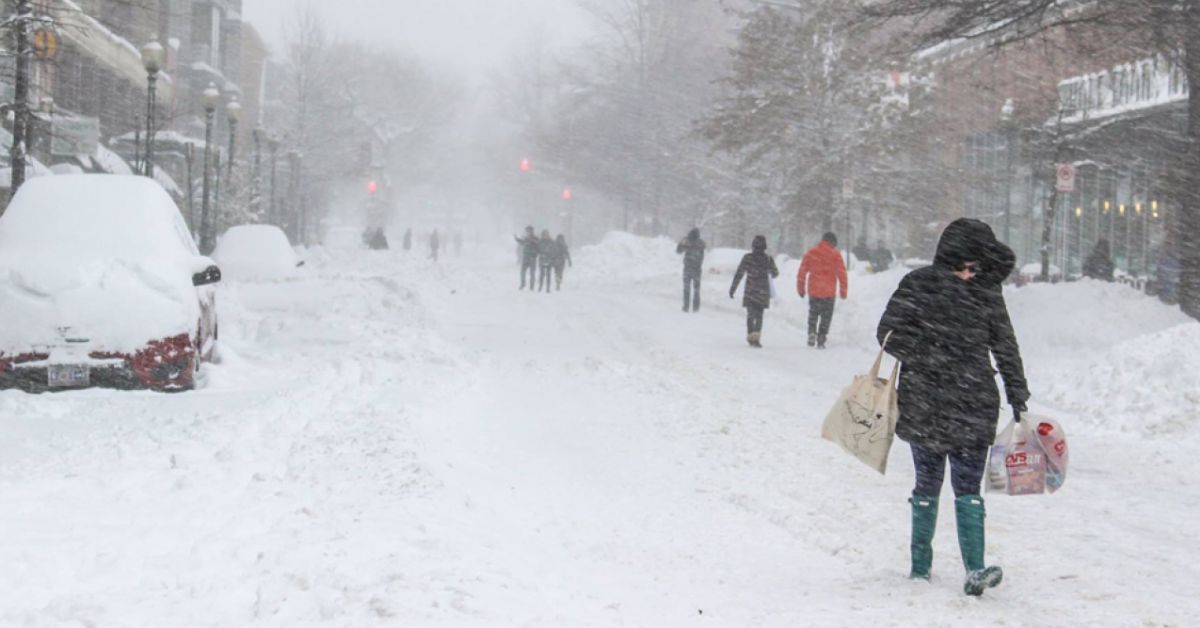A massive winter storm is expected to hit the US and parts of Canada just before the holidays, bringing cold temperatures, strong winds, and blizzard conditions. It’s likely to mess up plans for millions of people during one of the busiest times of the year for travel.
The storm is expected to hit the Midwest and Great Lakes region, including Ontario, Canada, later this week before moving toward the east coast. Officials are warning that it could bring record-low temperatures that could harm people’s lives.
It could even become a “bomb cyclone,” an unofficial name for a strong storm that gets stronger quickly. But experts say that Americans can stay safe whether they stay at home or hit the roads by taking a number of steps.
How To Keep Your Home Safe
Americans in the upper Midwest and Great Lakes, where more than a foot (30 cm) of snow is expected in some places, should follow a rule of thumb for preparing their homes for storms. Eric Stern, a professor at the University of Albany’s College of Emergency Preparedness, Homeland Security, and Cybersecurity, said, “The first 72 are on you.”
This means that people and families should have enough food, water, and essential medicines to last at least three days or 72 hours. Prof. Stern said it’s wise to be ready with supplies for even longer than that, especially for weak people, like the elderly and people with health problems.
Michael Muccilli, who runs the National Weather Service’s winter program, says that people should stock up on first-aid supplies, a flashlight, and batteries in case the power goes out. People should also have an emergency heat source, such as a generator with good ventilation and a carbon monoxide detector that works. Some good winter supplies are ice-melting salt and a spade to help clear snow from sidewalks and driveways.

How To Maintain Your Safety While Driving
The experts agree that there are some weather situations in which it is simply not safe to drive. According to Mr. Muccilli, if a blizzard warning has been issued for your region, the best course of action is to remain indoors and wait until the warning has been lifted.
Conditions that qualify as a blizzard have a visibility of less than a quarter of a mile (400 meters) with winds of more than 35 miles per hour (56 kilometers per hour). “The combination of those two factors can produce whiteout conditions, in which you literally cannot see right in front of you; as a result, you do not want to be outside when a storm of that kind is occurring,” Mr. Muccilli said.
When making more extended trips, drivers should check the weather forecasts and conditions at their final destination and critical spots along the route. Before embarking on a journey during the winter, travelers should make it their goal to be “well rested, well fed, and well hydrated,” according to Dr. Stern. Additionally, their car should be in good condition and equipped with snow tires.
According to the recommendations of industry professionals, motorists should ensure that their vehicle has a full tank of gas as well as an emergency supply kit that includes warm clothing, a mobile phone charger, jumper cables, a first aid kit, and a snow shovel and snow brush if their vehicle becomes stuck in the snow before setting out on their journey.
When travelers set out on the road, they should allow more time to reach their destination and drive more slowly than normal due to the possibility that the roads will be icy. Dr. Stern advised reevaluating the situation in the event that the conditions proved to be more hazardous than anticipated. “Do not allow pride to prevent you from turning around or finding protection along the route,” he advised. “Do not let pride get in the way.”
And for those who find themselves caught in traffic, the best course of action is nearly always to remain in the vehicle for as long as it has heat. According to experts, venturing outside during a snowstorm poses the risk of developing hypothermia and can cause drivers to become disoriented.
Mr. Muccilli suggested that individuals who are stranded in their vehicles and have a sufficient amount of gas may leave a window cracked open and run the engine for 10 minutes at a time to maintain an adequate level of heat within the vehicle without using up all of the gas.
Drivers can make themselves more apparent to emergency responders in a crisis by tying a piece of brightly colored cloth to the antenna or door of their vehicle. Even after the storm has passed, residents should use extreme caution when they are behind the wheel, according to Mr. Muccilli. It is possible that travel could be hazardous for at least a day or two after the storm because of the windy conditions that the system will leave behind.
Please enjoy our article if you do. If so, we’d love to hear your insights in the space provided below. You may get more of these updates by adding Journalistpr.com. to your bookmarks.

Leave a Reply